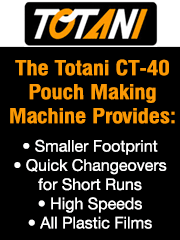PRIMIR Issues Study on Flexography
- Published: September 02, 2015
RESTON, VA | PRIMIR, the Print Industries Market Information and Research Organization, the research unit of NPES, announces completion of a new research study, "U.S. Market Trends for Flexographic Printing," authored by Freedonia Custom Research.
PRIMIR says that, with packaging a major print industry growth market and flexo continuing among the fastest-growing printing technologies, the new research is designed to provide an understanding of where the market is today, and how brand owner, converter, and application trends will impact the US flexographic printing market in the future.
The study examines drivers and barriers for flexography as well as technological advancements in presses, print quality, consumables, inks, and substrates. The research focuses on corrugated, tag and label, folding cartons, and flexible packaging in the food, beverage, pharmaceutical and industrial (including agricultural) vertical markets in the US. It also investigates how and where flexo competes with digital, offset, and gravure print processes.
Within the packaging segments, folding cartons are being replaced by flexible packaging and corrugated, says the study, noting that flexible packaging appeals to consumers' preferences for convenience and portioning, while corrugated makes more sense for bulk purchases. These trends are resulting in a shrinking market for folding cartons, according to the research. Premium folding cartons, however, used for cosmetics, perfume, electronics, and specialty food products will account for growth of folding cartons.
According to the study, flexography is well positioned for growth with trends in both product run length and substrate usage favoring flexo over gravure and litho. While digital printing continues to gain popularity, it remains competitive primarily in shorter runs. To prepare for future competition from digital, however, the flexo industry must continue to innovate with an end goal of higher print quality, says the study. One example is flat-top dot plates, which provide improved print quality while at the same time lower costs due to an improved lifespan of these plates. By driving fixed costs down, flexo reportedly will compete more effectively against digital printing.
The research also revealed an increasing desire in the marketplace to shift away from solvent-based inks and coatings. However, quality levels—especially in flexible packaging—have not reached acceptable levels for brand owners. Freedonia reports the likelihood that any technology that cost-effectively enables the use of solvent-free inks and coatings with acceptable quality levels will gain market acceptance.
Finally, while digital printing is positioned to compete with to flexo in shorter runs, it also offers the potential for hybridization. Presses that work in tandem offer opportunities for flexography to further achieve needed printing requirements from brand owners.
An overview of the study can be seen in a video accessed at this link.













